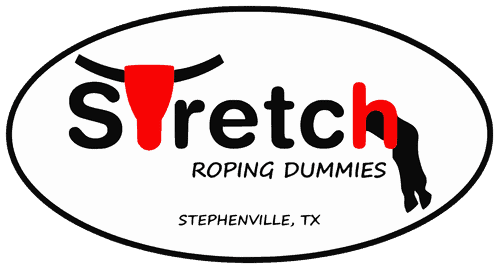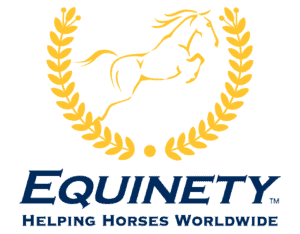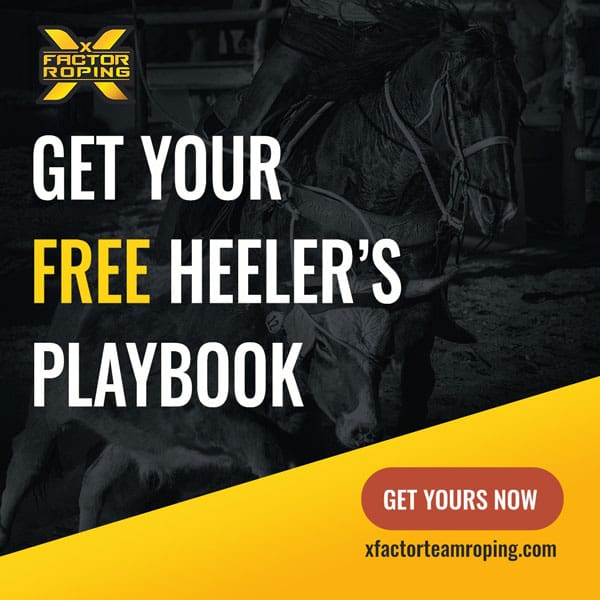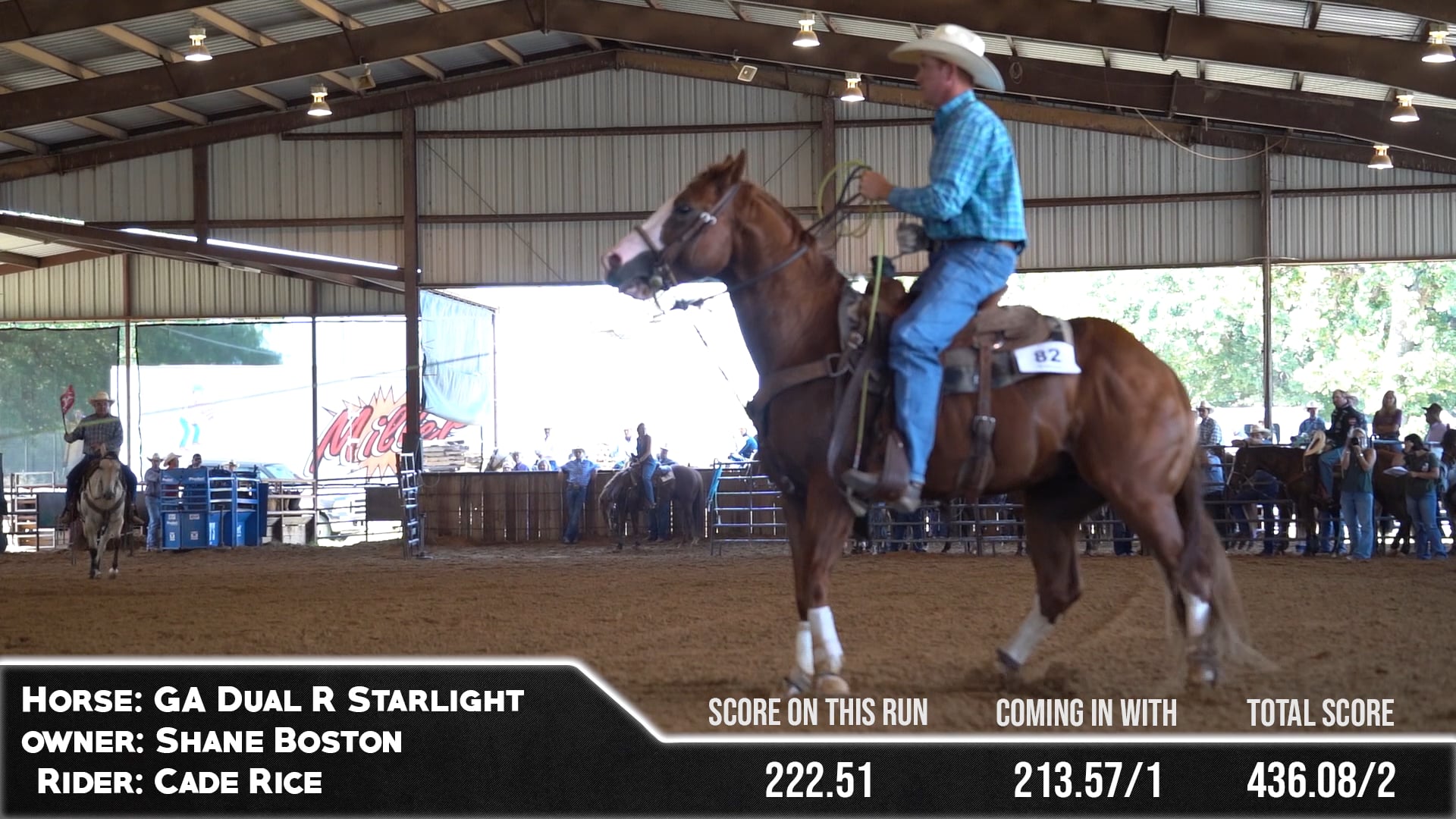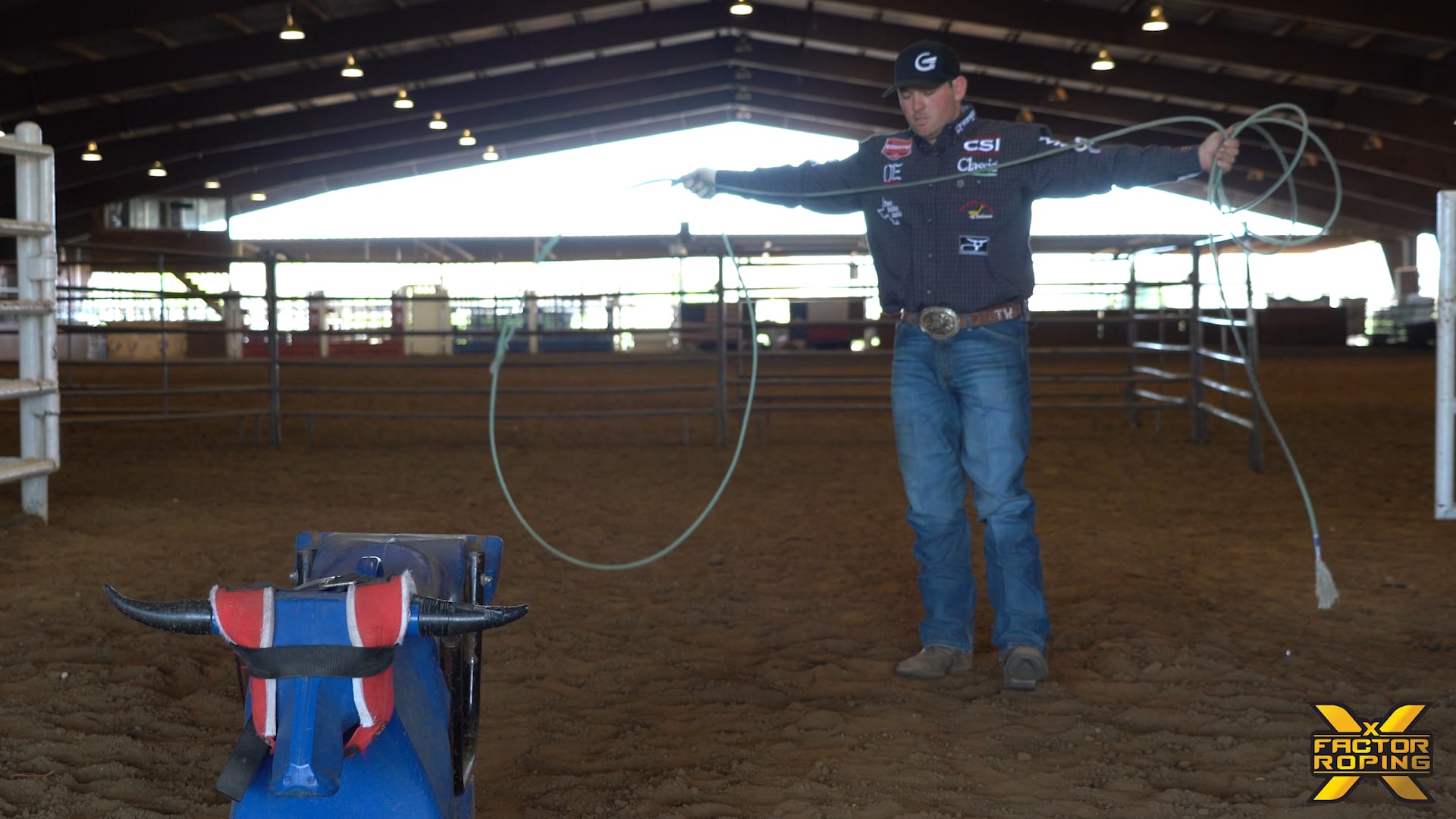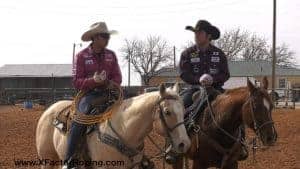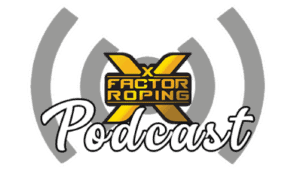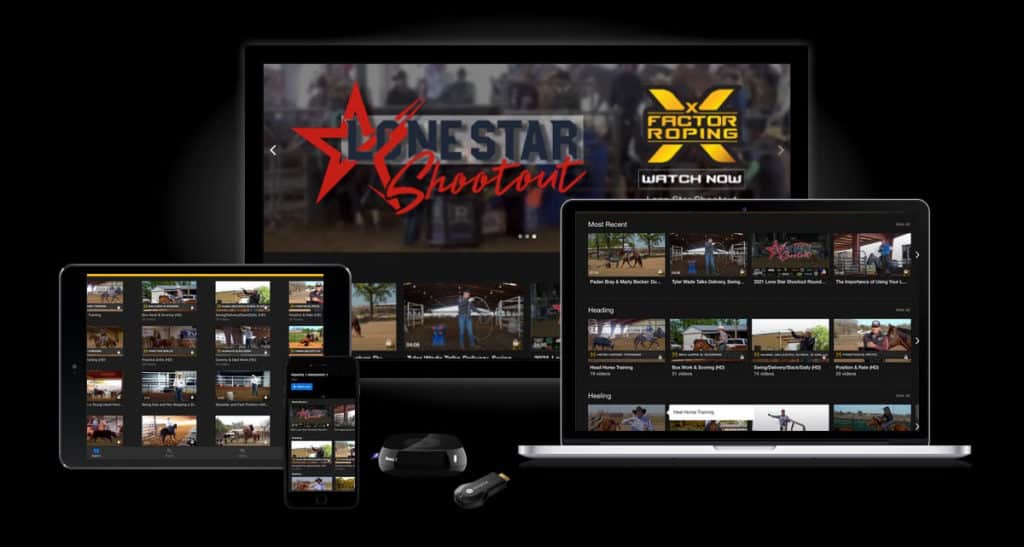[Pace] Jake, talked to us about the scenario. Before you guys rode in there, you’d been pretty aggressive at this point in the practice session. This is kind of right towards the end. You guys had made several really good aggressive runs in a row. I kind of put you guys on the spot said, “Hey, high teamer.” You got to beat 10 flat or under on a pretty realistic steer for a jackpot, kind of the same, what you were roping earlier today. What goes through your mind? Talk to us about your position, all that kind of stuff. Does any of that change or do you try to keep everything the same mentally and with your position and everything else? Or how do you go about out that scenario?
[Jake] Well, so like you said, so we’ve been being pretty aggressive. So especially at the open level to get into a position where you might potentially have to run one to beat 10 in the short round, you’ve probably been pretty aggressive all day. So there’s kind of two ways to look at it. Some guys will say, “Man, I’ve been aggressive all day. I’m going to be aggressive on this one.” You know, live by the sword, die by the sword. It’s not necessarily a terrible way to look at it, but it does limit your options. And it does. It’s going to cost you money along the way, in some situations, because you’re not going to make every three that you take.
[Jake] So for me, if I relate it back to golf, the only way that we can, as a heeler, the only way that I can change clubs, if you’re on the tee box and it’s a tight fairway and you want to maybe hit less club so you got a little more control of it where you can just grab a different club. Well, the only way that I can change clubs as a heeler is to change my position. So on this steer here, I just told myself to make sure that I’m not going to let my horse’s head go above that tail that we talked about.
[Jake] And so then from that point, I’m going to ride the corner as correct as I can. And when the steer gives me a heelable hop, then I’m going to take that shot. It doesn’t matter if I have to be 15 or 20 or six flat, whenever the steer’s heelable, whenever I see a shot that I know I can rope two feet on, I’m going to take that shot. So you’ll see me going down the arena and that horse, again, is pretty high power and he don’t want to necessarily let me hang him back especially because I’ve been being really aggressive on him.
[Jake] So you’ll see me kind of fighting for the position here to like, not let myself get too high. I keep my power on my swing coming all the way around the corner. And then when I get in a good spot and that steer takes a good clean hop, I’m in time to heel him. So you’ll see him going down the arena, especially on this angle. You know, again, this horse is not a real big fan of me not letting him get up there. But where I was letting my horse go on up there, now I’m fighting him back and I’m going, “No. We’re not going to get that high.” I’m not going to limit my options here. I’m going to have options of tracking him or throw him fast if I want to.
[Jake] So, Pace, you did a really good job of setting him up. I was patient through the corner, kept my power and my swing, my tips pointed down and that’s in a complete rhythm of the run. There’s nothing that was… Even though I heeled him, second or third hop, there was no risk taken there. So it’s not necessarily… So I think the biggest misconception is, guys look at, they look at two things. They look at the result, everybody’s really result oriented. So just because I rope two feet there, it’s the smartest thing in the world, right? And if I rope a leg, then people are, “Oh, what are you doing?” So that’s why I like to go back to when the steer’s heelable I’m going to heel him, and I’m not going to overthink it, and I’m not going to try to change everything that I’ve been doing. If anything, all I’m going to do is pull my position back just a little bit more. That’s the only thing I change the whole day. And then I’m going to keep my power, keep my aggressiveness, keep looking for the shot.
[Jake] And just because you heel the steer decently fast in the short round doesn’t mean that it’s like, “Oh man, you were taking a big chance.” Like I set that shot up really, really well. And so I’m able to go ahead and heel him, second, third hop. If I were to set it up wrong, or if that steer would’ve ran around the corner and made harder, I would’ve heeled him halfway across the arena. And it still would’ve been just as smart a shot, just as good a shot. But it’s because that’s when the steer allowed me to heel him. And so I don’t think guys need to get caught up in the result or you have a game plan of how you want to attack it.
[Jake] Being double minded is one of the biggest things that’ll kill you. If you back in there thinking, “Man, I’m just going to catch.” And then all of a sudden you see a throw that’s faster and maybe your instincts tell you to take it where you’re going to end up missing because you weren’t ready to take it. And vice versa, if you tell yourself I’m going to be really aggressive right here. And I’m just, I’m not going to back off. I’m going to heel aggressive like I have all day. Well, if that steer fights it or maybe your header’s thinking something different and now you’re running over yourself and you’re throwing because you made up your mind in the box, you were going to throw fast. To me, you have to just respect the cow, trust the process of the run, be aware of where your position is and then just heel him whenever he is heelable.
[Pace] And that’s another thing too, like you were talking about your horse wasn’t a big fan of you backing him off, going down the arena, but you didn’t give in to him wanting to get in there like, “Oh, well it didn’t go perfect. So I’m just going to abandon ship and throw fast like I have because it might have felt just a tick easier on that horse on that particular run.” But you didn’t give into that and you made him stay back and come around there and it still worked out, I mean perfect, obviously.
[Jake] Yeah. And honestly, that’s what gave that, that horse is, like I said, he wants to get to the spot and stop. Well, by me giving him more room to move, where he’s unforgiving is if I let him get too high on the cow. If I’m too high on that cow, he’s probably going to turn, I’m going to be thinking one more swing, he’s going to stop and I’m liable to set it right beside him. And so then I’ve missed high call. By me controlling my position and controlling where I’m at going down the arena, now I’ve manufactured my own momentum into the run by him wanting to get to that spot because I’ve kept him back here. So he’s driving to get to that spot. I’ve got power on my rope. Whenever he gets to that spot, he wants to stop, I’m in time and I’m in a good spot anyway. So even though that’s maybe a flaw of that horse by me putting him into a good spot, it still made my job really easy.
[Jake] And that’s how you get by him. That’s how I’ve been roping on him at the jackpots. But for him to step up and be a big time horse, he’s going to have to be more forgiving and be able to be in a bad spot and keep his feet moving.
[Pace] Well. And I think at the end of the day, rhythm is probably one of the keys to winning and how to keep rhythm into a run where you can still control the time, right? Like the variables. And I think all you’re doing with pulling them back or a little bit is you’re just creating a corner that you can ride to and then set it up. But I think a lot of people where they do get in trouble is when they get there, they keep swinging. And that messes up the timing with the header and the face and they might lose legs. And there’s a lot of little things that go in there and I just don’t think you can hesitate. You just got to stay within the rhythm. And then it just comes back to, like you said, that change. If you’re going to change a club to a more conservative shot, that it’s just how you rode the turn. But when you get there, you still got to pull the trigger. And I think, right? Does that sound correct?
[Jake] Yeah. I think. Going back to the, everybody being result oriented, I think people are so scared to mess up. So, Michael Jordan, I don’t know what the numbers are, but I mean, he missed an incredible number of game winning shots, but he never shied away from the moment. He never didn’t want the ball. So the biggest thing about roping is, yeah, sometimes you’re going to miss high calls. Sometimes you’re going to mess up in the short round. Sometimes you’re going to mess up in the fourth round. The biggest thing to me about roping is you’ve got to continue to put yourself in the position to be the winner, you want the ball when it comes down to game time, you want to be in those high pressure situations because that means you’re roping good. And then that’s going to build confidence. And then, yeah, sometimes it’s not going to go your way, but if you continue to put yourself in that position, it’s going to go your way more than it’s not going to.
[Jake] So you’ve got to focus on the times that you did execute. And then if you didn’t, kind of going back to the whole missing one of the practice pin. You have to look at everything realistically. I’m probably guilty of being a little bit too hard on myself. I don’t really care if you flip the cow over or yank him over the fence, like I feel like it’s my job to up two feet.
[Jake] So, that’s been a good thing in a certain sense of it’s kept me driving and I’ve worked really hard at what I do, but then there’s also a realistic way of looking at it. And if you jerk the steer over the fence and you do such a bad job of handling him, that it’s like, “Man, that’s a really, really hard cow to heel.” You need to be able to realistically look at that. And not that you’re making excuses for yourself, but you know, like, “Man, that was a really tough spot. I could have done this or that different that would’ve made it a little bit easier, but ultimately that was a really tough job. Maybe I did an okay job and it just wasn’t good enough to get by that cow.”
[Jake] And so there’s excuses and then there’s realistic way of looking at it. But, ultimately, you can’t be afraid of messing up high call. You can’t because you want to be in that spot. You want to be the last team to run the cow. You don’t want to be the guy that’s like, “Man, I’d rather be fifth call and just kind of hoping no one’s paying attention. And then if I sneak in there and win third, that’s great.” You want to have the confidence and be able to feel like you want to be in those positions.
[Pace] Absolutely. And then on top of it, you get a, you can live with that, right? You know, when you do catch him, when you do miss him, you can kind of understand like, “Hey, at least I played it to my game plan and stuck within what I do.” And that keeps it in your control. And I think that just leads to being able to understand that because I think that was a shot that was real similar to like a BFI or something like you’ve had where it was kind of go knock them out and you guys were still on seven or something like that. But it was a real similar, just rode a little more conservative corner, but still heeled him pretty fast. And, boom, win one of the bigger ropings of the whole year.
[Jake] Well, I think the big thing is just because it doesn’t work out doesn’t necessarily mean it was a bad game plan. So, if my plan is to be a little more conservative, well, if I’m a little too slow, I can’t be mad at myself or I can be mad at myself for making a bad game plan. But if you have a game plan and you execute that game plan and it doesn’t win, or it’s not good enough, or mistakes happen, you can’t necessarily be mad at yourself for that. You can be mad at a bad game plan, but as long as you’re executing it, then ultimately you’re doing what you tried to do.
[Jake] If I tell myself I’m going to go to the jackpot all day and I’m going to heel every steer fourth hop, because I think that’ll be good enough. And I’ll be happy going home. Well then all of a sudden you don’t win nothing. You can’t go home mad if you did what you wanted to do. You can reevaluate it for the next roping, but you can’t be mad just because a game plan wasn’t necessarily correct if you’re executing what it is that you’re wanting to do.
[Pace] Right. Jake, I appreciate you coming on here. I know we got a lot of runs and this was pretty cool to do. It’s kind of an experiment. It’s kind of been touch and go a little bit, but it’s pretty fun when we can do that. And then on top of it, the runs are pretty fresh. So it’s like we just practiced a couple hours ago and then kind of go through it and kind of see him. So, thanks again.
[Jake] Yeah. I appreciate you having me on. It’s fun.




